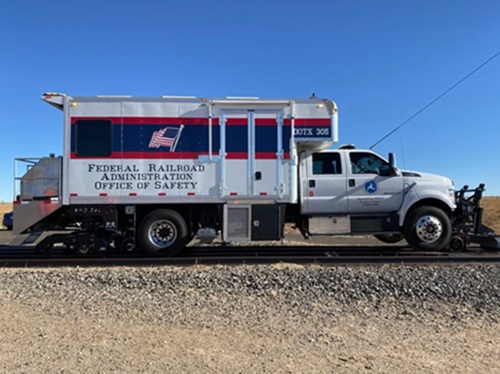The inaugural policy summit held by the Intelligent Transportation Society of America September 11-12 in Washington, D.C., provided a preview of the issues facing the next surface transportation reauthorization effort.
[Above photo by ITS America]
Rep. Sam Graves (R-MO) and Rep. Rick Larsen (D-WA) – the chairman and ranking member, respectively, of the House of Representatives Committee on Transportation and Infrastructure – discussed some of those reauthorization issues in separate sit-downs at the meeting with Laura Chace, president and CEO of ITS America.

“We want to make sure the next reauthorization is a bipartisan effort – Rick [Larsen] and I brought that back this year when we passed FAA [Federal Aviation Administration] reauthorization, passed a WRDA [Water Resources Development Act] bill, a pipeline safety bill, and Coast Guard reauthorization,” Rep. Graves said.
“I am an old school politician in that I believe in compromise. You will not get everything you want, but through compromise, you will get most of it. And once you get a bill through compromise, you stand behind it,” he stressed. “That is how we are planning ahead for a bipartisan [reauthorization] product.”
Rep. Graves said key issues facing reauthorization remain how to keep the Highway Trust Fund or HTF solvent, how to levy fees on vehicles using the roadways but not paying motor fuel taxes, and how to use technology to improve roadway safety.
“There are all kinds of opportunities with technology; there are huge, huge opportunities to use technology to make our roads safer,” he stressed. “The challenge is getting members of Congress to understand them so we don’t stifle any opportunities for [technology] advancements.”
Rep. Graves added that another big challenge is that many who will be in Congress following the November 5 election will never have worked on a surface reauthorization bill before, and thus may not “understand why it is so important” to the nation’s economy. “This is a challenge for us moving forward – we have a lot of work to do to explain why [reauthorization] is so important, why members need to get behind it, and why these [surface transportation] investments matter.”

Rep. Larsen echoed Rep. Graves’ position on the need to educate new members of Congress on the importance of reauthorization.
“We always get hung up on how fund it, but that is really not the first question we need to ask about reauthorization,” he said. “What we will need to get the committee to focus on is that ‘we need to do this.’ So, what are we going to do?”
At minimum, Rep. Larsen said the House T&I committee will need to continue what the Infrastructure Investment and Jobs Act or IIJA provided in terms of surface reauthorization funding.
“But what will we change; what will we keep? Do we do more than we did? Do we do the same things? Do we do different things? What is the baseline of things we will do? There is also the ‘blocking and tackling’ of the bill – roadway and highway safety; bridge repair and safety, a major area where the urban and rural parts of the country come together; the role of emerging technologies in transportation, including how to use AI to identify unsafe roads and intersections; ways to use AI to test new materials,” he said. “This will be a big bill with a lot of things in it.”
Also, Rep. Larsen emphasized that the role motor fuel taxes play in reauthorization funding needs to change.
“The gas tax is sustainable in terms of providing a portion of Highway Trust Fund funding, but not for the whole Highway Trust Fund,” he noted.
To provide more insight into how different sectors of the industry are preparing for the next reauthorization bill, the ITS America summit convened a panel of policy experts drawn from different transportation organizations.

Susan Howard, director of policy and government relations for the American Association of State Highway and Transportation Officials, noted that states are focused on developing “stable and sustainable” funding levels, providing more formula funding versus grant funding, and giving states more flexibility how to use that funding.
“AASHTO kicked off its reauthorization process in February, focused on crafting topical white papers on safety, research and innovation, carbon reduction, and more – cross cutting papers that will coalesce with a larger vision with broader transportation themes,” she said.
Howard noted that AASHTO’s various committees are crafting a series of “modal-specific papers” as well, designed as a “bottom up approach” to outline the various needs of highways, railroads, maritime, aviation, and other parts of the nation’s transportation network.
“We plan to have package ready a year from now to present to Congress,” she said. “Every [reauthorization] has a theme and we’re waiting to see what theme emerges from this one. But the real key for the next bill is sustained and stable investment in transportation. We will see how that plays out.”
 Top Stories
Top Stories
State DOTs Making Preparations for Wintertime Operations
December 12, 2025 Top Stories
Top Stories

